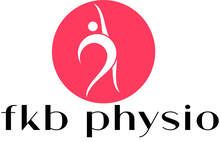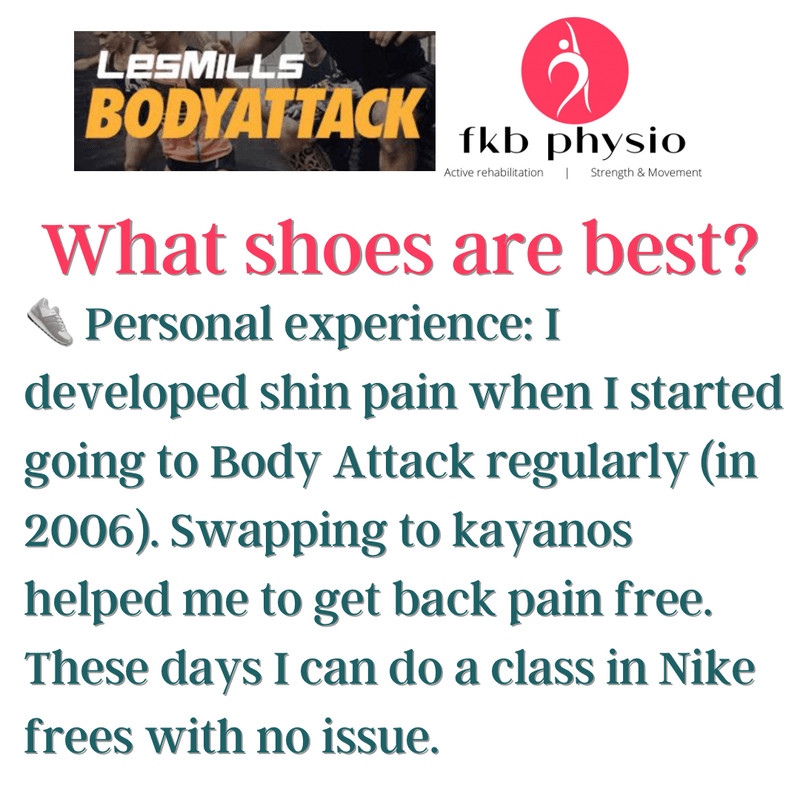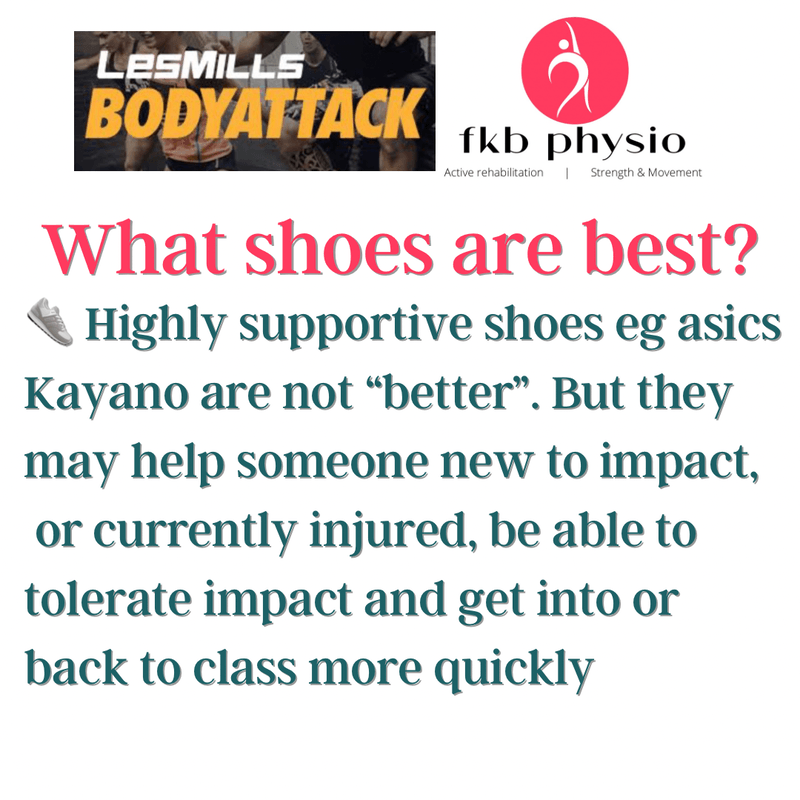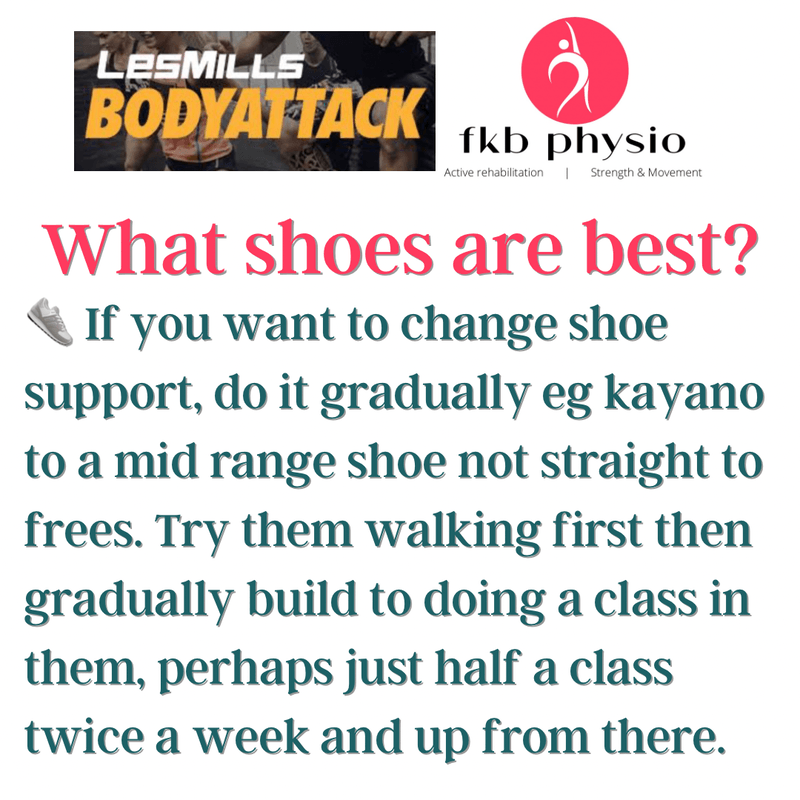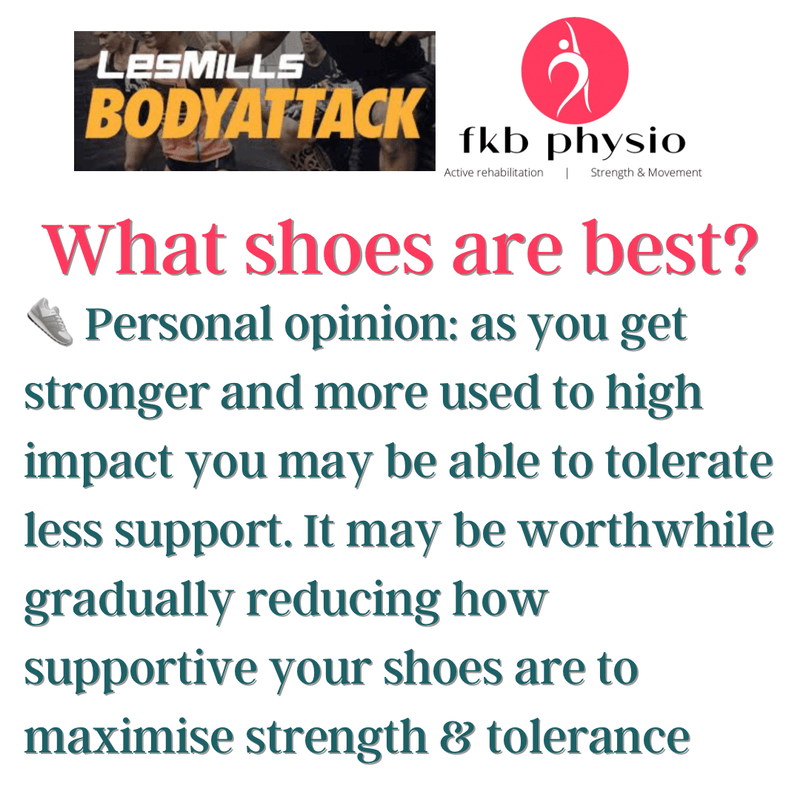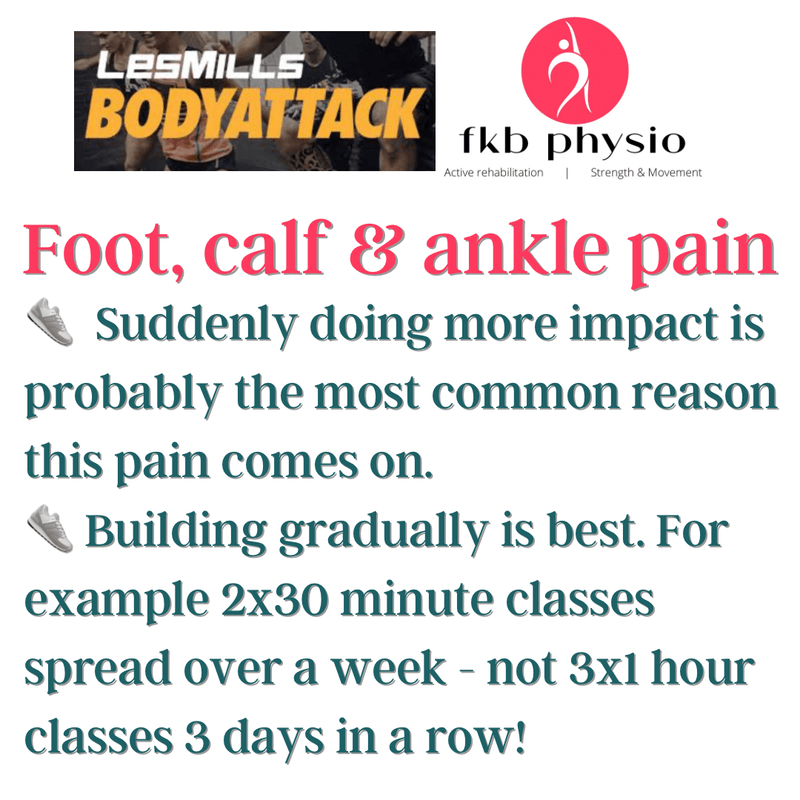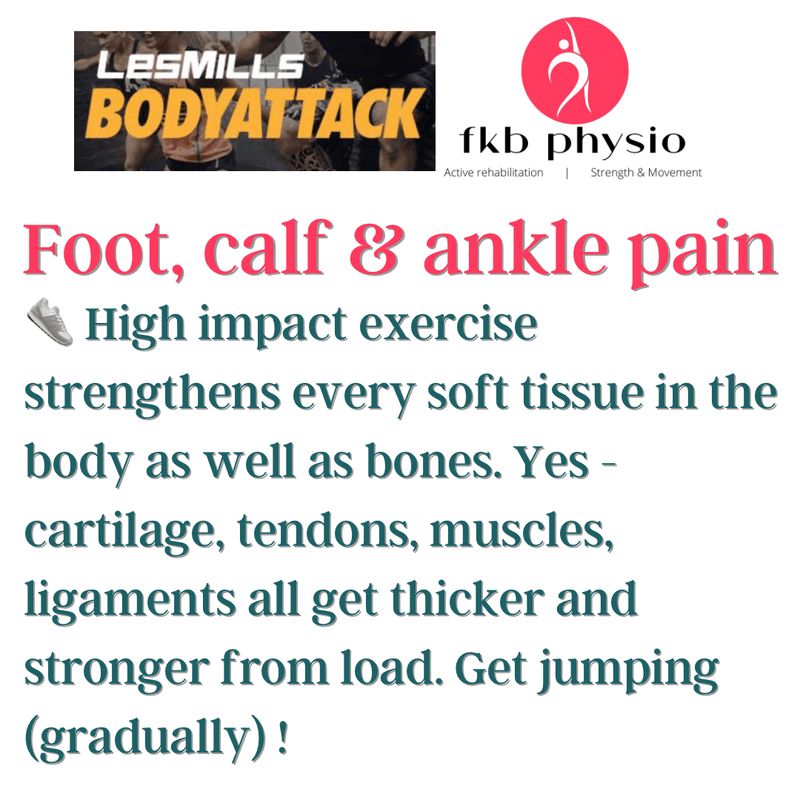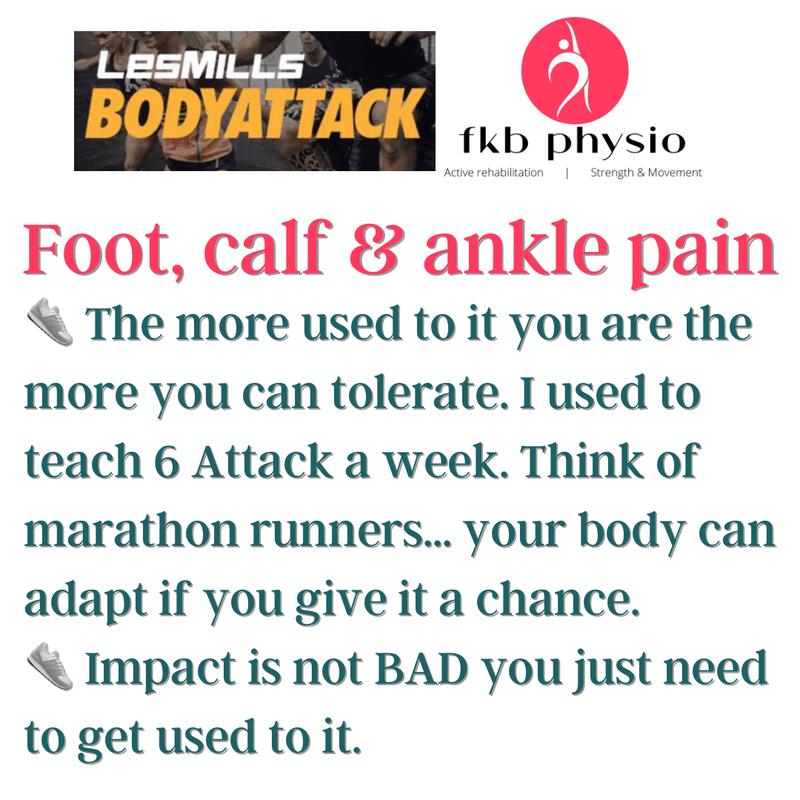Les Mills Body Attack: Foot, ankle and calf pain
Note: This is in no way affiliated with Les Mills, and is not to be taken in place of medical advice. I am a physio and an Attack Instructor so it is purely just some advice from my experience!
First of all, there is no evidence any footwear is better than any other in relation to injury prevention, as indicated by multiple papers posted in the BJSM. People are likely to self select the most comfortable pair and that is the best predictor of what is the most appropriate shoe for them (go figure).
However if someone is new to Body attack, has hypermobile joints, weakness in their leg or foot muscles, or has developed lower limb pain already, or any number of other things, they MAY benefit from more supportive shoes initially to at least keep them going while they get used to it.
Improved strength over time should allow for more minimal shoes. I have gone from asics Kayanos (super supportive, 10mm heel, arch support) down to Nike frees (minimal, 6mm heel, no arch support) over the years - however my FIRST EVER injury was shin pain when I started body attack and swapping from my cross trainers to kayanos at the physio suggestion basically fixed it.
Time - place - person specific, but my opinion is ideally the goal should be to be able to tolerate less supportive shoes, as that is an indication of soft tissue capacity / strength / tolerance.
If dropping to a less supportive shoe, do it GRADUALLY, as suddenly swapping to barefoot/minimal shoes IS linked with injury risk! Build up gradually eg stand in them, walk in them (not every day, a few times a week and not for hours) before trying them in a class.
CALF, FOOT, OR ACHILLES TENDON PAIN ARE ALL REALLY COMMON IN BODY ATTACK. BECAUSE THERE IS SO MUCH JUMPING, IT CAN TAKE A BIT OF TIME TO GET USED TO.
This isn’t because impact isn’t bad for you, you just need to condition your body to be able to handle it.
Here are some tips.
👉🏻Gradually increasing the amount jumping you to is probably the most basic / useful thing you can do. The more running / jumping you’re used to, the easier you can get used to it, but if you haven’t done much recently (in the last 4 weeks) then you may need to gradually build up.
👉🏻 Allow time to get used to your first class; don’t do two days in a row to start.
👉🏻 Get used to the bouncing before adding bigger Plyometrics like jump lunges and jump squats.
👉🏻e.g. your first week you could do 30 mins only, twice in the week only, and leave out jump squats and jump lunges.
THOUGH YOUR CALVES MAY FEEL STIFF OR TIGHT, IT ISN’T BECAUSE THEY NEED TO BE STRETCHED, IT IS PROBABLY MORE THAT THEY NEED TO DEVELOP CONDITIONING.
Aside from gradually building up to it, you can also do some exercises to strengthen up your feet and calves.
These exercises are organised approximately from easiest to hardest, though it will depend on the person. Bent knee calf raises are often neglected but are particularly useful. I am more about training movements these days, but bent knee calf raises potentially do activate more deep calf (soleus) muscle which is particularly important in Achilles or plantar fascia problems.
2-3 sets of 10-15 is a good start for the exercises, starting easier and progressing to harder.
Additionally, make sure you land your heels during the class . As in, land on your toes first, then put your heel down like I do in the video. This also helps!
